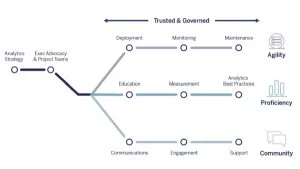A laboratory is a very inventive and exciting environment, but it’s also a very hazardous one. When operating within a lab, it’s essential that you follow good practices in order to not only maintain personal safety but to get the very best out of your working environment. Here’s how to successfully operate within a lab and make a habit of the best lab practices.
Carry Out a Health and Safety Risk Assessment
You may not always be aware of the dangers within your lab, or perhaps you don’t have the time to assess your space for potential dangers adequately. Arranging a professional risk assessment as soon as your lab is set up is essential for continued safe use and practices. Companies such as macontrols.com offer professional risk assessments, tailored for the lab environment. This can identify any hazards and prevent all risks within the lab.
Always Wear (and Provide) Personal Safety Equipment
It’s essential for you and others within your laboratory to wear protective equipment at all times. This is also applicable to any visitors to the lab, such as friends, family, or suppliers who may be making deliveries. Anybody stepping foot into the lab should be asked to wear and provided with the critical safety equipment. It should include a lab coat that is buttoned up at all times, to protect your clothes and sign, and also includes safety goggles when using hazardous substances.
You should also be aware of how you are dressing for your lab work. Make sensible choices when it comes to clothing, shoes, and hairstyles (such as tying long hair back).
Wash Your Hands When Entering and Leaving the Lab
Good hygiene practices need to be maintained in any lab environment. This means washing your hands when entering a lab before you proceed with your work and washing your hands when leaving the lab. It doesn’t just mean at the beginning and the end of the working day – it means every time you step in and out of the laboratory, even if it seems arduous to wash your hands again if you have only just done it. Keeping on top of this means you maintain the hygiene levels in your lab at all times.
Maintain a Tidy Working Atmosphere
Keeping your lab tidy and cleaning up after yourself not only means a more productive working atmosphere but also eliminates extra risks of trips and falls from objects being left in the way. This is also important to avoid cross-contamination between beakers and lab equipment, and also prevents spillages or damage to any glass beakers or kits.
Eliminate Distractions
It can be tempting to take your mobile phone into the lab with you and have it lying on the desk while you proceed with your work. However, this can not only cause a distraction through the desire to check your phone constantly when you should be concentrating on experiments, but it can also cause you to jump should it ring loudly – and this isn’t ideal if you are handling sensitive equipment such as easily-breakable vials or operating burners.
By following these good lab practices, you can easily establish a safe and happy working environment.

